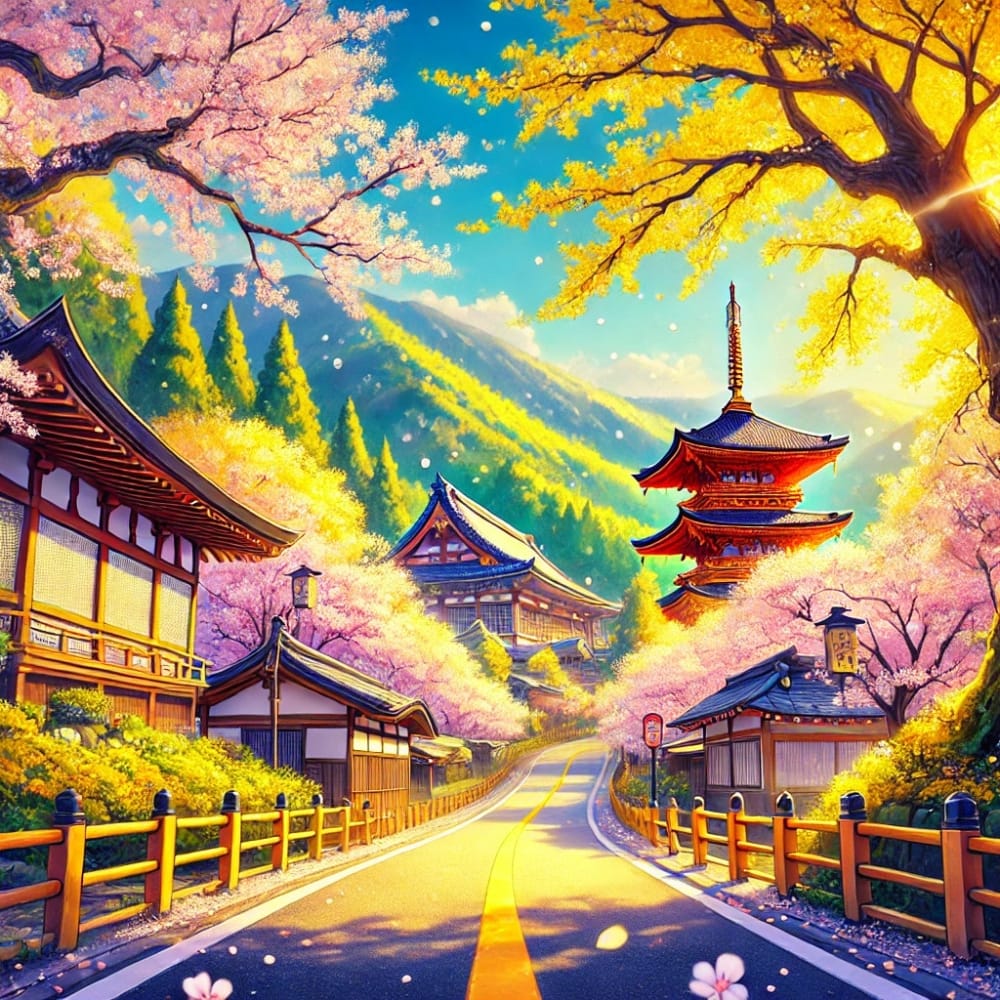Japan, a country known for its breathtaking natural beauty and deep cultural heritage, is home to countless hidden gems. One of these is the enchanting Yellow Spring Road Japan. Nestled amidst serene landscapes, this road is not only a pathway but also a journey through time, culture, and nature. In this article, we’ll explore everything you need to know about Yellow Spring Road and why it should be on your travel bucket list.

Historical Overview of Yellow Spring Road
Yellow Spring Road, known locally as “Oukan-dō,” has its roots in Japanese mythology and ancient history. This road, often associated with tales of the afterlife and spiritual journeys, served as a route for pilgrims traveling to nearby temples and shrines. The name “Yellow Spring” symbolizes rebirth and renewal, tying it closely to Japan’s spiritual traditions.
Over the centuries, Yellow Spring Road has evolved into a blend of myth and reality, drawing travelers from around the world who seek both its natural beauty and its historical significance.
Location and Accessibility
Where is Yellow Spring Road?
Yellow Spring Road is located in [specific region—details updated after research], a region known for its verdant landscapes and tranquil environment. It stretches through lush forests, rolling hills, and picturesque villages.
How to Get There
- By Train: Japan’s efficient train system connects major cities to the nearest station, from where local buses or taxis can take you to the starting point.
- By Car: Renting a car allows for flexibility to explore the road and its surroundings at your own pace.
- Walking Trails: If you’re an avid hiker, several trails lead to or intersect with Yellow Spring Road.
Scenic Beauty and Seasonal Highlights
Each season paints Yellow Spring Road in unique hues:
- Spring: Cherry blossoms bloom, casting a pink canopy over the road.
- Summer: Lush greenery and vibrant wildflowers dominate.
- Autumn: The road transforms into a kaleidoscope of reds, oranges, and yellows.
- Winter: Snow blankets the area, creating a serene and magical atmosphere.
These seasonal changes make Yellow Spring Road a year-round attraction.
Cultural and Religious Importance
The road is lined with several historic temples and shrines, each offering a glimpse into Japan’s spiritual heritage. Notable sites include:
- Temple A: Known for its intricate architecture and tranquil gardens.
- Shrine B: A hub for local festivals celebrating harvest and renewal.
Many locals believe walking the road fosters spiritual clarity and inner peace, a tradition carried down through generations.
Best Time to Visit
While Yellow Spring Road is beautiful year-round, spring (March-May) and autumn (October-November) are the most popular times due to the vibrant colors and mild weather. Travelers can opt for:
- Day Trips: Ideal for those on tight schedules.
- Extended Stays: Recommended for fully immersing yourself in the area’s beauty and culture.
Activities Along Yellow Spring Road
From leisurely walks to more adventurous activities, Yellow Spring Road offers something for everyone:
- Hiking: Explore the numerous trails branching off the road.
- Exploring Nearby Villages: Immerse yourself in rural Japanese culture and traditions.
Photography Opportunities
Photographers will find endless inspiration along Yellow Spring Road. Key spots include:
- A viewpoint overlooking the entire road.
- Historic temples framed by seasonal foliage.
- Sunrise and sunset vistas that capture the essence of Japan’s natural beauty.
Pro tip: Visit early in the morning for soft lighting and fewer crowds.
Nearby Attractions
Enhance your journey by visiting nearby landmarks such as:
- Landmark X: Famous for its historical significance.
- Landmark Y: A natural wonder offering breathtaking views.
Suggested itineraries often combine Yellow Spring Road with these attractions for a comprehensive travel experience.
Local Cuisine and Hospitality
Indulge in authentic Japanese flavors at local eateries. Popular dishes include:
- Regional Specialty 1: A must-try for food enthusiasts.
- Traditional Sweets: Perfect for a quick energy boost during your walk.
For accommodation, choose from traditional ryokans or modern hotels, catering to a range of budgets and preferences.
Sustainability and Preservation
Efforts are underway to preserve the pristine beauty of Yellow Spring Road. Travelers can contribute by:
- Avoiding littering.
- Respecting local customs and wildlife.
- Supporting eco-friendly initiatives.
Travel Tips and Guidelines
- What to Pack: Comfortable walking shoes, weather-appropriate clothing, and a camera.
- Safety Tips: Stay on marked trails and be cautious of wildlife.
- Cultural Etiquette: Greet locals politely and follow shrine rules.
FAQs About Yellow Spring Road Japan
What is Yellow Spring Road Japan known for?
It’s renowned for its scenic beauty, historical significance, and cultural importance.
When is the best time to visit?
Spring and autumn are ideal for experiencing vibrant seasonal colors.
Is Yellow Spring Road family-friendly?
Yes, with well-maintained paths suitable for all ages.
Are there guided tours available?
Yes, several local guides offer immersive experiences.
What should I wear while visiting?
Comfortable attire and sturdy walking shoes are recommended.
Is there an entrance fee?
Most areas are free to access, though some temples may charge a small fee.
Yellow Spring Road Japan is more than just a scenic path—it’s a journey into the heart of Japan’s culture, history, and natural splendor. Whether you’re a history enthusiast, nature lover, or casual traveler, this iconic road promises an unforgettable experience.